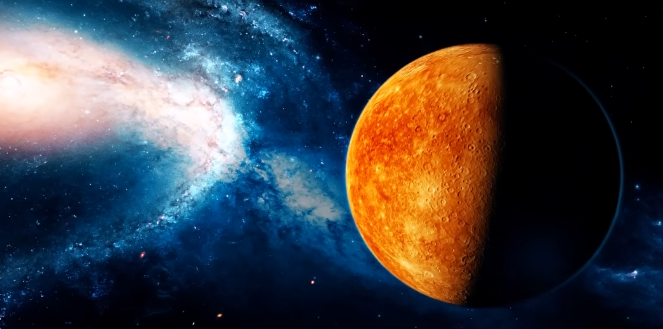Every 18 years! In June, there will be a rare five-star unity in the skies above the Earth!
Good news! If you missed the April 2022 planetary event, then don't worry, an even bigger planetary feast is about to kick off in June!
According to scientists, most of the planets in the solar system will be in a grand celestial alignment in June. All seven planets will be roughly aligned in the predawn sky, and five of them will be visible to the naked eye from the horizon, including Mercury, Venus, Mars, Jupiter and Saturn.39bet-xsmb-xổ số tây ninh-xổ số binh phước-xổ số binh dương-xổ số đồng nai
The most striking thing this time around is the planetary alignment, which means the five planets appear in the same order in the sky as they are at the same distance from the sun. Orderly alignment of the planets is very rare, typically occurring every 18 years. It was last seen in the sky in this order in December 2004. A conjunction of two or three planets is a reasonably common occurrence, but seeing five planets at once is a rare event.
Mercury will be difficult to spot early this month: viewers will need an unobtainable view of the eastern horizon and may need binoculars to spot it. So how exactly are we going to catch them in this planetary alignment?
First up is Mercury, which was absent from the celestial parade in April. Due to its proximity to the sun, Mercury, the smallest planet in the solar system, will be difficult to see during the first few days of June, but Mercury will reach its maximum distance to the west on June 17, so it will be distinctly visible in the eastern predawn sky after mid-June.
 Next up is Venus, which normally dominates the morning sky. When Venus is the brightest point of light visible in the east, before it disappears into the morning light, further up you will find the two planets, Mars and Jupiter, will be close to each other, and when they join in a few minutes, Jupiter will be the brightest of the two planets. In fact, the gas giant will be the brightest spot in the sky before dawn, and Saturn's surface magnitude will only become slightly fainter after Venus and Mars have a surface magnitude of 0.61.
Next up is Venus, which normally dominates the morning sky. When Venus is the brightest point of light visible in the east, before it disappears into the morning light, further up you will find the two planets, Mars and Jupiter, will be close to each other, and when they join in a few minutes, Jupiter will be the brightest of the two planets. In fact, the gas giant will be the brightest spot in the sky before dawn, and Saturn's surface magnitude will only become slightly fainter after Venus and Mars have a surface magnitude of 0.61.
Finally, with Saturn more away from Jupiter and shining in the southern sky, the ringed planet will appear as a faint blob, nearly as bright as Mars, Jupiter and Saturn when they approach their opposites. Over time, they will increase in brightness as Neptune appears between Jupiter and Saturn, and Uranus will be relatively close to the horizon between Venus and Mars. Unfortunately, these two planets can only be seen through a telescope or binoculars, the route of the best views about 30 minutes before sunrise to watch you, because in most cases, the ideal of the observation point should be able to distinctly see toward the east of the horizon, but large body lines will be visible in the second half of this month.
Thus the best day to see this route is the morning of June 24, because on June 24, the 25-day-old new moon will also join the parade, and the moon will be positioned between Mars and Venus, filling the huge apparent angular gap between the two planets as the moon moves through the constellation during its cycle, It will be Jupiter approaching Saturn on June 19, Mars on June 23, Venus on June 26, Mercury on June 27, and as the moon approaches the five planets, it will pass in front of Uranus on June 25, temporarily hiding the planet.
For the first time in 18 years, five planets - Mercury, Venus, Mars, Jupiter and Saturn - will line up and be visible at dawn this month. However, Uranus's lunar occultation can only be seen from a tiny part of the world through a telescope. If you don't see the mercury for the first time, please don't despair, the tiny planet is the hardest to find, especially at this time of year, when night line for a short time, the large body also, no bright comet in June, 2022, there was no obvious meteor shower, also does not have a solar eclipse, but on June 14, you can see in this year's first super moon, Interested friends can set the alarm clock to watch!
